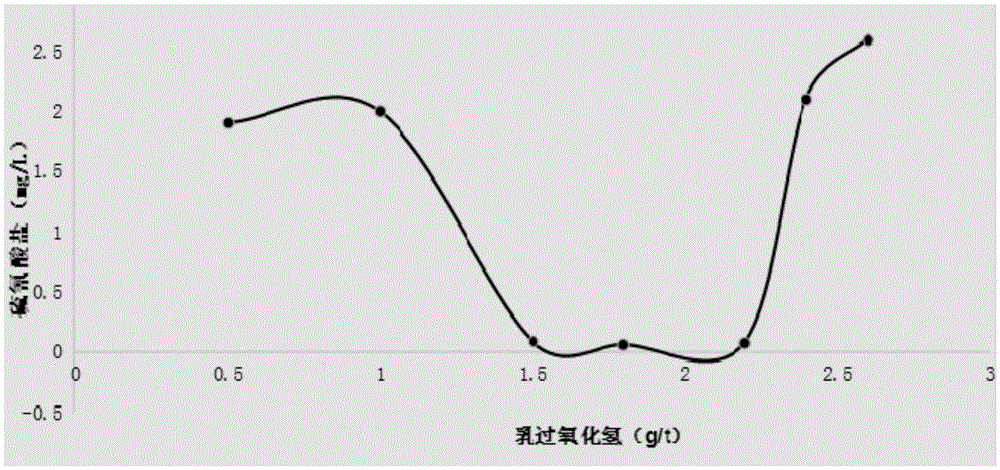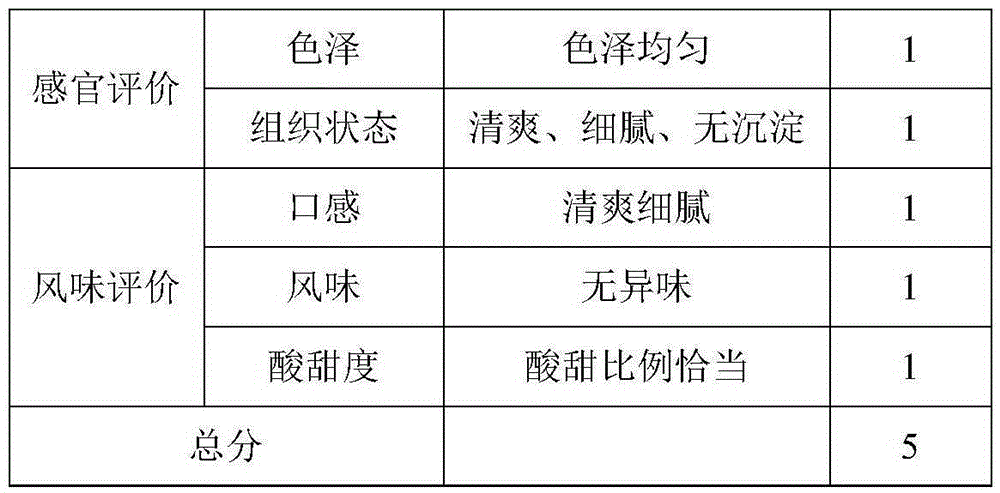Preparation method of liquid dairy products by adding milk catalase to prolong shelf life
A lactoperoxidase and catalase technology, which is applied in the field of liquid dairy product preparation, can solve the problems of reduced product nutrition, shortened product shelf life, unsatisfactory microbial lethality and the like
- Summary
- Abstract
- Description
- Claims
- Application Information
AI Technical Summary
Problems solved by technology
Method used
Image
Examples
Embodiment 1
[0058] Process for producing pasteurized liquid dairy products containing natural lacto-catalase
[0059] 1. Immobilization of lactation catalase
[0060] 1. Mix 760 international units of catalase solution into every gram of 280-mesh acidic alumina, stir in an ice bath for 20 minutes, and then centrifuge (1000 rpm, 2°C, 15 minutes).
[0061] 2. Stir and disperse the precipitate with distilled water at a ratio of 6.56 ml per gram of the precipitate to form a suspension. Mix the suspension with the same volume of 8.5% sodium alginate and stir well.
[0062] 3. Drop the mixture into 28% CaCl 2 Stir slowly in the solution to form, filter the formed particles out of distilled water, wash, and vacuum dry at room temperature for 48 hours, then store in a desiccator at 40°C for future use. The enzyme loading in the resulting immobilized lactocalase was 1.5 wt%.
[0063] 2. Electromagnetic Sterilization of Immobilized Lacto-Calase
[0064] The immobilized lacto-catalase is irradi...
Embodiment 2
[0074] Preparation method of low-temperature long-time sterilized liquid dairy product containing natural lacto-catalase
[0075] 1. Immobilization of lactation catalase
[0076] 1. Mix 780 international units of catalase solution into every gram of 350-mesh acidic alumina, stir in an ice bath for 20 minutes, and then centrifuge (1000 rpm, 2°C, 15 minutes).
[0077] 2. Stir and disperse the precipitate with distilled water at a ratio of 6.86 ml per gram of the precipitate to form a suspension. Mix the suspension with the same volume of 9% sodium alginate and stir well.
[0078] 3. Drop the mixture into 30% CaCl 2 Stir slowly in the solution to form, filter the formed particles out of distilled water, wash, and vacuum dry at room temperature for 48 hours, then store in a desiccator at 40°C for future use. The enzyme loading in the resulting immobilized lactocalase was 1.5 wt%.
[0079] 2. Electromagnetic Sterilization of Immobilized Lacto-Calase
[0080] The immobilized la...
Embodiment 3
[0090] Preparation method of ceramic membrane microfiltration sterilization liquid dairy product containing natural lacto-catalase
[0091] 1. Immobilization of lactation catalase
[0092] 1. Mix 720 international units of catalase solution into each gram of 220-350 mesh acidic alumina, stir in an ice bath for 20 minutes, and then centrifuge (1000 rpm, 2°C, 15 minutes).
[0093] 2. Stir and disperse the precipitate with distilled water at a ratio of 6.05 ml per gram of the precipitate to form a suspension. Mix the suspension with the same volume of 8% sodium alginate and stir evenly.
[0094] 3. Drop the mixture into 25% CaCl 2 Stir slowly in the solution to form, filter the formed particles out of distilled water, wash, and vacuum dry at room temperature for 48 hours, then store in a desiccator at 40°C for future use. The enzyme loading in the resulting immobilized lactocalase was 1.3 wt%.
[0095] 2. Electromagnetic Sterilization of Immobilized Lacto-Calase
[0096] The...
PUM
 Login to View More
Login to View More Abstract
Description
Claims
Application Information
 Login to View More
Login to View More - R&D
- Intellectual Property
- Life Sciences
- Materials
- Tech Scout
- Unparalleled Data Quality
- Higher Quality Content
- 60% Fewer Hallucinations
Browse by: Latest US Patents, China's latest patents, Technical Efficacy Thesaurus, Application Domain, Technology Topic, Popular Technical Reports.
© 2025 PatSnap. All rights reserved.Legal|Privacy policy|Modern Slavery Act Transparency Statement|Sitemap|About US| Contact US: help@patsnap.com



